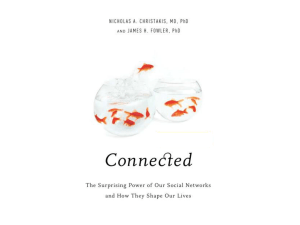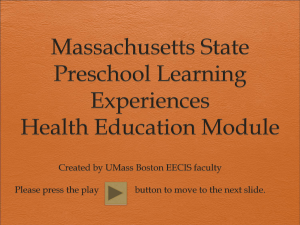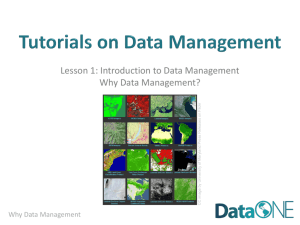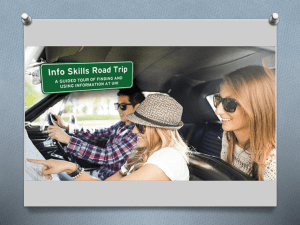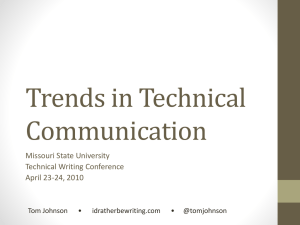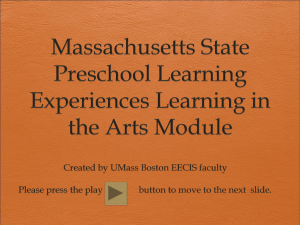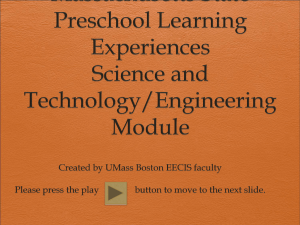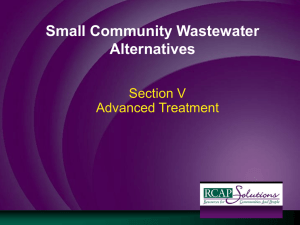Social science preschool (modified)
advertisement
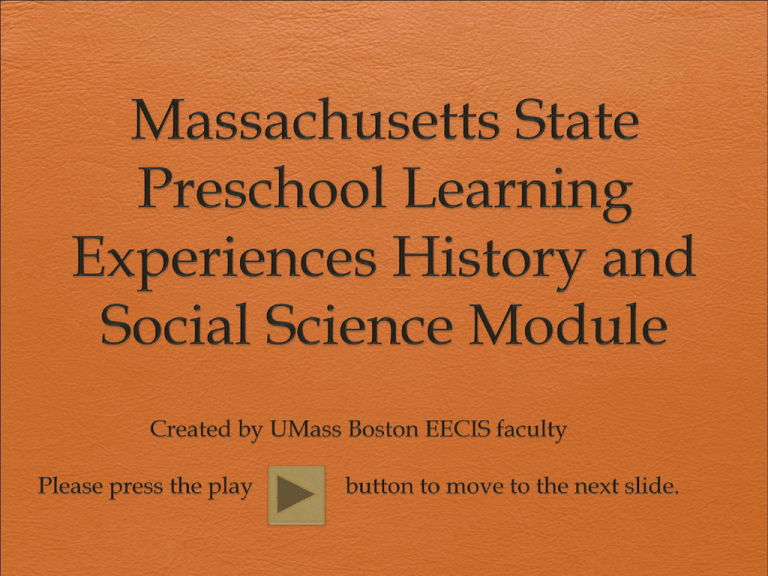
Overarching Principles These principles should be kept in mind at all times when thinking about preschool curriculum and working with young children. 1. All children are capable of learning 2. Children show individual differences in development 3. Knowledge of child growth and development is essential for program development and implementation 4. Children’s language skills are the best indicators of academic success 5. Developmental domains are highly interrelated 6. Young children learn by doing 7. Families are the primary caregivers and educators of their young children Overview of the History and Social Science Preschool Learning Experiences Review the Overview of the History and Social Science document before continuing this module. Learning Guidelines 1 1. Discuss and identify the order of daily routines. Image courtesy of BoardMakerAt (http://www.angelfire.com/pa5/as/boardmaker/lu nchschedule.pdf) Creative Commons 2.0 Learning Guidelines 2 2. Discuss and use vocabulary related to time in relevant activities. Time Words Morning Noon Afternoon Evening Night Clock Before After Month Year Today Tomorrow Image courtesy of Maria (http://www.flickr.com/photos/84164344@N00/1332620 063) (2007) Attribution-NonCommercial-ShareAlike 2.0 Generic (CC BY-NC-SA 2.0) Learning Guidelines 3 3. Identify and describe cause and effect as they relate to personal experiences and ageappropriate stories. Numeroff, L. and F. Bond. (1998). If You Give a Pig a Pancake. New York: Harper Collins. Image courtesy of Flickr (http://www.flickr.com/photos/gozalewis/3670957644/) (2009) Attribution-ShareAlike 2.0 Generic (CC BY-SA 2.0) Learning Guidelines 4 Personal information Address Phone number Town, state, country Types of Transportation Familiar buildings Post office Fire station School Direction Words Geographic Features Hills Rivers Ocean 4. Engage in activities that build understanding of words for location and direction. Image courtesy of Karen Apricot (http://commons.wikimedia.org/wiki/File:Carrollton _firehouse.jpg) (2006) Creative Commons Attribution-Share Alike 2.0 Generic Learning Guidelines 5 5. Construct and describe simple maps of their immediate neighborhood. Image courtesy of Flickr (http://www.flickr.com/photos/photosbyemily/4395709022/) (2010) Attribution-NonCommercial 2.0 Generic (CC BY-NC 2.0) Image courtesy of Leo Reynolds (http://www.flickr.com/photos/lwr/5363249/in/ photostream/) (2005) AttributionNonCommercial-ShareAlike 2.0 Generic (CC BY-NC-SA 2.0) Learning Guidelines 6 6. Discuss examples of rules, fairness, personal responsibilities, and authority in their own experiences and in stories read to them. Morning Job Chart Video Image courtesy of Linda (http://www.flickr.com/photos/lindah/113841605/in/p hotostream/) (2004) Attribution 2.0 Generic (CC BY 2.0) Learning Guidelines 7 7. Talk about the qualities we value in a person's character such as honesty, courage, courtesy, willingness to work hard, kindness, fairness, trustworthiness, selfdiscipline, loyalty, and personal responsibility. Books to teach about character Taking Turns Video Rainbow Fish by Marcus Pfister Dr. Seuss Books Stellaluna by Janel Cannon The Wednesday Surprise by Eve Bunting Jamaica's Find by Juanita Havill Frog and Toad are Friends by Arnold Lobel Learning Guidelines 8 8. Discuss classroom responsibilities in daily activities. Snack Helper Video Image courtesy of Edupics.com (http://www.edupics.com/coloring-page-handout-books-i14757.html) Creative Commons 2.0 Learning Guidelines 9 9. Discuss roles and responsibilities of family or community members who promote the welfare and safety of children and adults. Being a Firefighter Image courtesy of Reellady (http://farm1.static.flickr.com/112/263029775_75e4c 4b370.jpg) Attribution-NonCommercial-NoDerivs 2.0 Generic (CC BY-NC-ND 2.0) Learning Guidelines 10 10. Observe and discuss the various kinds of work people do outside and inside their homes. Firefighter Video Image courtesy of Flickr (http://farm5.static.flickr.com/4002/4396733242_b1bc34fcc1 .jpg) (2010) Attribution-NonCommercial-NoDerivs 2.0 Generic (CC BY-NC-ND 2.0) Learning Guidelines 11 11. Observe, discuss, and dramatize basic economic concepts such as buying and selling, producing, and consuming. Gas Station Video Learning Guidelines 12 12. Observe some U.S. national holidays and discuss how and why we celebrate them. Image courtesy of Dave (http://farm3.static.flickr.com/2008/1964905867_8b9447 601f_o.jpg) (2007) Attribution-NoDerivs 2.0 Generic (CC BYND 2.0) Learning Guidelines 13 13. Observe or listen to important American symbols including the American flag and its colors and shapes; the melody of the national anthem; the picture and name of the current President, and the words of the Pledge of Allegiance. Image courtesy of U.S. Air Force (http://www.af.mil/shared/media/ggallery/hires/afg_0 21223_001.jpg) Next Steps Read the articles included below that support why these standards are being taught and the best ways to teach them. Look over the History and Social Science scope and sequence checklist and inventory for meeting the standards and keeping track of how you meet them. This is also a tool that can be used to plan progress monitoring for students. Complete the module quiz. Complete and turn in your module assignment via Blackboard. Congratulations!! You have completed the History and Social Science Module.

